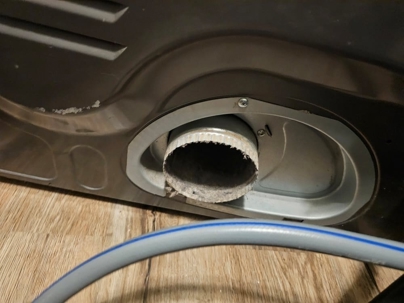As the sweltering heat of summer approaches, ensuring that your air conditioning (AC) system is in optimal condition becomes paramount. Bill Howe’s Ultimate AC Maintenance Checklist serves as a comprehensive guide to help homeowners perform necessary tasks that will enhance the performance and longevity of their air conditioning units. Regular maintenance prevents costly repairs and boosts energy efficiency, leading to lower utility bills and improved indoor air quality.
This article will explore the importance of regular AC maintenance, provide an overview of Bill Howe’s checklist, and delve into each key aspect to ensure your cooling system operates smoothly. To ensure you receive top-notch service, consider partnering with a trusted brand like Momentum AC & Electric for your HVAC needs.
Importance of Regular AC Maintenance
Regular maintenance of your air conditioning system is crucial for several reasons:
- Optimal Efficiency: An improperly maintained AC unit can work harder, consuming more energy and leading to higher utility bills. Regular maintenance helps keep the unit clean and efficient.
- Extended Lifespan: Consistent upkeep can significantly extend the lifespan of an air conditioner. Studies show that a well-maintained AC unit can last between 15 and 30 years, whereas neglect can drastically shorten that lifespan.
- Improved Indoor Air Quality: Regularly cleaning filters and coils can help reduce allergens, dust, and harmful pollutants in your home, thereby improving the overall air quality.
- Fewer Breakdowns: Routine maintenance helps catch minor issues before they escalate into more significant problems. This proactive approach can save homeowners from costly emergency repairs.
- Warranty Compliance: Many manufacturers require proof of regular maintenance to validate warranties. Failing to maintain your AC system can lead to costly repairs that may not be covered.
In light of these benefits, let’s explore the components of Bill Howe’s Ultimate AC Maintenance Checklist.
Overview of the Ultimate AC Maintenance Checklist
This checklist provides homeowners a systematic approach to maintaining their air conditioning units. The tasks outlined below ensure your system runs smoothly and efficiently throughout the cooling season.
Pre-Maintenance Preparation
Before diving into AC maintenance tasks, it is vital to prepare adequately.
Gather Necessary Tools and Equipment
To complete the maintenance tasks effectively, ensure you have the following tools and equipment at hand:
- Screwdriver set
- Compressed air canister
- Vacuum cleaner
- Soft-bristle brushes
- Cleaning solutions (such as dish detergent)
- Safety goggles and gloves
- Having these tools ready will facilitate a smoother maintenance process.
Safety Precautions and Power Shutdown
Before commencing any work, always prioritize safety:
- Power Down: Shut off the power to your AC unit at the circuit breaker. This step prevents accidental activation while you are working.
- Wear Protective Gear: It is essential to wear safety goggles and gloves to protect against debris, dust, or harmful chemicals.
By taking these precautions, you ensure a safe working environment while maintaining your AC system.
Inspect and Clean Air Filters
One of the simplest yet most effective maintenance steps involves cleaning or replacing air filters.
Importance of Clean Filters
Air filters are crucial in maintaining indoor air quality and system efficiency. Dirty filters can restrict airflow, causing the system to work harder and increasing energy consumption and wear on the equipment.
Step-by-Step Cleaning Guide
- Locate the Filters: Depending on your AC model, the filters may be located in the return air duct or within the air handler.
- Remove the Filters: Carefully remove the filters from their housings, noting their orientation for reinstallation.
- Vacuum or Wash: If the filters are reusable, vacuum them to remove debris. For thorough cleaning, wash them with water and dish detergent, ensuring they dry completely before reinserting.
- Replace Filters: If the filters are disposable, replace them with new ones. This task is essential every one to three months, depending on usage and environmental factors.
When to Replace Air Filters
Replacing filters every 1 to 3 months, or more frequently if you notice increased usage or dust accumulation in your home, is advisable. Keeping fresh air filters will benefit your AC’s performance and your health.
Check and Clean Condenser Coils
Dirty condenser coils hinder heat exchange, leading to decreased efficiency.
The Function of Condenser Coils in AC Performance
Condenser coils release heat absorbed from indoor air. When these coils are dirty or blocked, they cannot effectively dissipate heat, causing the unit to work harder.
How to Access and Clean Coils
- Locate the Coils: The condenser coils are typically found in the outdoor unit of your AC system.
- Remove Debris: Clear leaves, grass, or debris surrounding the unit to facilitate airflow.
- Clean the Coils: Wash the coils gently with a garden hose, removing dirt and grime. For deeper cleaning, apply a coil cleaner solution following the manufacturer’s instructions.
- Inspect for Damage: While cleaning, look for bent fins or signs of damage. If present, consider using a fin comb or consulting a technician for repairs.
Signs of Dirty or Damaged Coils
If you notice warm air blowing from vents, increased energy bills, or ice forming on the coils, the condenser coils likely need immediate attention.
Inspect the Thermostat Settings
The thermostat is the control centre for your AC system, making it essential to ensure its settings are proper.
Ensuring Correct Temperature Settings
Check if the thermostat is set to “cool” mode and verify that the temperature settings align with your desired comfort levels. A standard recommendation is to set thermostats to around 78°F (26°C) while home to balance comfort and efficiency.
Calibrating the Thermostat
If you notice significant temperature discrepancies, recalibration may be necessary. Follow the manufacturer’s guidelines on calibration, or consider consulting an HVAC professional.
Benefits of Upgrading to a Programmable Thermostat
For those seeking advanced control, upgrading to a programmable thermostat can yield significant benefits. Such devices allow you to set different temperatures at various times, optimizing energy use based on your schedule. Brands like Momentum AC & Electric Pro offer smart thermostat products with Wi-Fi connectivity and remote control features.
Examine Electrical Components
Electrical connections play a pivotal role in the operation of your HVAC system.
Importance of Electrical Connections
Loose, corroded, or damaged wiring can lead to system failure. Regular inspection of these components is essential for safety and efficiency.
Check for Loose or Damaged Wires
Open the AC unit’s access panel and inspect all visible wiring. Tighten any loose connections and replace corroded or frayed wires.
Testing Capacitors and Contactors
Test the capacitors and contactors using a multimeter to ensure they function correctly. If either component shows irregular readings, replacement may be necessary to avoid system failures.
Clean Evaporator Coils
Like condenser coils, evaporator coils require regular cleaning for optimal performance.
Role of Evaporator Coils in Cooling
Evaporator coils absorb heat from indoor air, providing a cooling effect. Dirty coils can reduce cooling capacity or freeze over.
Step-by-Step Cleaning Instructions
- Turn Off Power: Always disconnect the power before cleaning.
- Access Coils: Usually located in the air handler, remove the access panel to reach the evaporator coils.
- Clean the Coils: Gently dust off the coils with a soft brush or vacuum. For a more thorough cleaning, use a mixture of warm water and a cleaning solution approved for AC systems.
- Inspect for Ice Buildup: If you notice ice in the coils, ensure the airflow is unobstructed, and check refrigerant levels to prevent freezing issues.
Preventing Coil Freezing Issues
Ensure that filters are clean, vents are free of obstruction, and refrigerant levels are adequate to prevent ice buildup in coils.
Check and Clear the Condensate Drain Line
The condensated drain line effectively removes excess moisture from the AC system.
Importance of a Clear Drain Line
Clogs in the drain line can cause water damage and promote mold growth. Preventive measures are essential to maintaining a functional drain line.
How to Unclog the Condensate Drain
- Locate the Drain Line: Usually, a PVC pipe extends outside your home.
- Clear Debris: Use a wet/dry vacuum or a plumber’s snake to remove any blockages in the line.
- Flush the Line: Pour a mixture of water, vinegar, or a biocide through the line to eliminate any remaining buildup.
Preventing Mold and Algae Growth
Regularly inspect and clean the condensated pan and line to deter algae and mould growth, which can lead to unpleasant odours and health risks.
Inspect the Fan and Motor
An effective fan and motor are critical for proper airflow and cooling.
Upon checking the Fan Blades for Damage
Inspect the fan blades for signs of wear or damage. Ensure they spin freely without obstruction.
Lubricating the Motor and Bearings
Lubricate the fan motor and its bearings regularly to prevent friction-related issues. This simple step reduces wear and contributes to efficient operation.
Ensuring Proper Airflow
Verify that the fan is operating smoothly and that airflow throughout the vents is consistent and unobstructed.
Test Refrigerant Levels
Proper refrigerant levels are crucial for effective cooling and energy efficiency.
Importance of Correct Refrigerant Levels
Low refrigerants can significantly reduce your AC’s cooling ability and lead to higher energy costs. Ensuring the correct amount is vital for optimal system performance.
How to Test and Adjust Refrigerant
- Turn Off the Unit: Safety first – always power down the AC before checking levels.
- Access to Service Ports: Use the gauge set to determine refrigerant pressure on both the low and high sides.
- Interpret Pressure Levels: Compare readings against standards for your specific system. Low pressure indicates insufficient refrigerant, while high pressure suggests an overcharge or blockage.
- Add Refrigerant if Necessary: If levels are low, consider adding refrigerant. A certified technician should only perform this process to ensure compliance with safety regulations.
Signs of Refrigerant Leaks
Look for hissing sounds, warm air from vents, or ice on the refrigerant lines – all potential signs of refrigerant leaks that need immediate attention.
Perform a System Performance Test
After completing maintenance tasks, evaluating the AC system’s overall performance is essential.
Running the AC System After Maintenance
Turn the system back on and monitor its performance closely.
Checking for Unusual Noises or Smells
Listen for odd sounds, such as rattling or grinding, which could indicate mechanical issues. Also, be alert for musty smells that might indicate mould growth within the system.
Evaluating Overall System Efficiency
Note the system’s cooling effectiveness and energy consumption, which will provide insights into its operational efficiency. If problems persist, consult a technician for a thorough inspection.
Conclusion
Here’s a recap of the critical maintenance steps:
- Gather tools and ensure your safety.
- Clean and inspect air filters regularly
- Check and clean the condenser and evaporator coils.
- Maintain proper thermostat settings.
- Inspect electrical components
- Clear the condensated drain line.
- Test and adjust refrigerant levels
- Conduct system performance tests
With consistent maintenance, you can enjoy a comfortable home while saving on energy costs and prolonging the life of your AC unit. For professional service and maintenance, consider contacting Momentum AC & Electric. Skilled technicians are ready to assist you in maintaining your system to the highest standards. Schedule your inspection today and experience the benefits of a well-maintained air conditioning unit.

